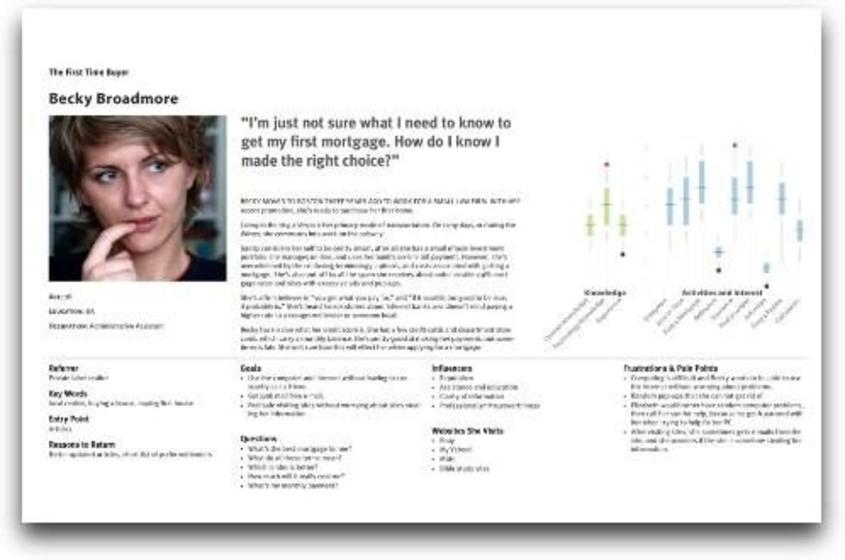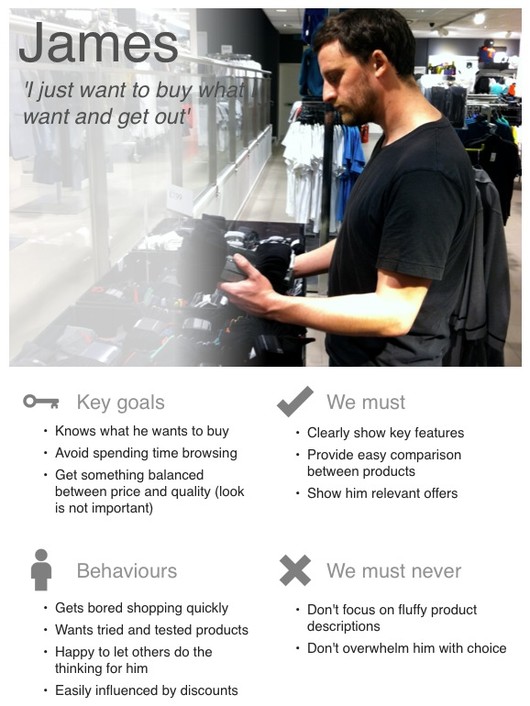User Experience - Personas, the whys and hows close
In Codegent College

For the next few months I’m going to write a bit about User Experience. I firmly believe that User Experience shouldn’t be the dark art that some portray it as. There is no reason why good UX can’t be put into practice within a client company or by an agency (or both). Like most things, it comes down to common sense and an ability to think laterally – very laterally at times. Working with a professional UX expert can pay dividends, especially with a challenging content structure, and they will help you get to where you want to be quicker, but it's not impossible to get there yourself with a bit of time and thought.
The thing I love about UX projects is that it combines analytics with creativity. In many ways it is the bridge between the nerdy researcher and the wacky creative. Although in my experience, most successful agency people have a bit of both in them anyway.
One great way of focusing everyone’s attention on what they really need to concern themselves about is the development of Personas. A persona is a (largely) fictional snapshot of a typical user. It can be based on research or, in the absence of research, instinct. It can be an ever-evolving tool that is updated as the project goes along and more insights and ideas are generated.
Of all the tools in the UX professional’s armoury, Personas are the least statistically valid, accurate or meaningful. So you might be forgiven for asking ‘why the hell should we waste time creating them?’. And in some cases there isn’t the need, the time or indeed the budget, to develop personas. However, in many cases it can be a great help.
What is a persona?
If you think about your business, you will be able to picture a typical user. That person might be your customer. But then, after a few moments you’ll think that actually you will have more than one typical user – what about returning customers? What about small customers vs large ones? What about suppliers, or potential employees, investors, or the press? What about customers who have radically different needs: maybe one needs some detailed product information but another just needs a phone number?
Personas help you get all these ideas into one, “at-a-glance” place. They are a visual shortcut that allows everyone to think about their range of different users without having to keep describing them.
A good place to start is to imagine each of your core audience types, give them a name, an age, a gender and a profession. It is counter-intuitive in our age of politically correct avoidance of stereotypes at all costs, but just run with it for a bit. In some cases, there may be some research data about users that can be employed, but if there isn’t you can still have an educated guess – remembering that this isn’t meant to be an accurate piece of data.
Then consider how they consume digital media. Are they likely to be confident, need hand-holding, happy to explore or time poor? Are they going to be mobile? Do they like to interact using social media? You should also consider what types of things they are going to be looking for from your site: do they just want to find something and move on, or do they want to be inspired or convinced?

Image courtesy of cxpartners.com
Bringing this altogether will give you a series of references that can be used at each stage of the UX process:
Developing user journeys: the personas act as a way of ensuring that the key user journeys have been considered
Task modeling: a way of understanding how users behave and reasons why they may drop out before they achieve their goal.
Content auditing: looking at the current/proposed content and checking it against each persona allows you to work out whether there are any gaps.
Design concepts: for the designer, having a sense (however artificial) of the different users provides a backdrop against which to pitch the creative.
Functional idea generation: often having a persona will spark an idea along the lines of “you know what would be really cool?” It’s often only when you try and put yourself in someone else’s shoes that insights arise that you mightn’t have considered otherwise.